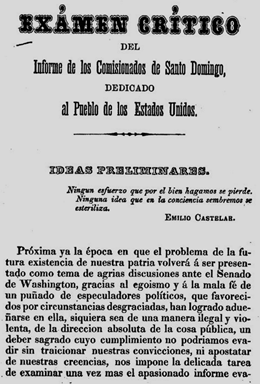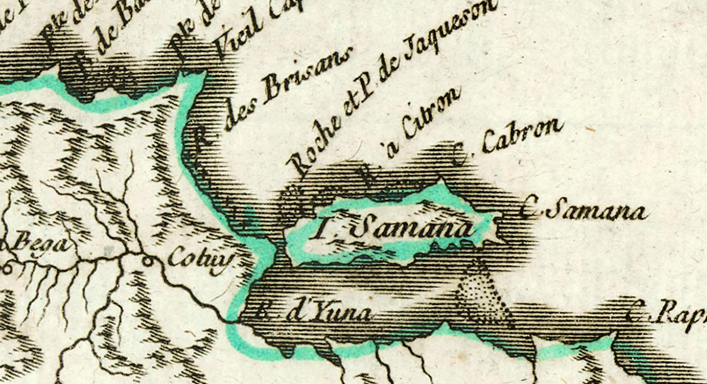"Buenaventura Báez and the United States" by Rayford Logan (1897-1982)
An excerpt from Logan’s Haiti and the Dominican Republic (1968). Logan was an African-American Civil Rights leader, a historian, and an anti-imperialist.
The voluntary submission by [Dominican leader Pedro] Santana to the restoration of Spanish sovereignty [over the Dominican Republic] is probably unique in the history of modern colonialism. His manoeuvre was doomed to defeat almost from the beginning. Spain could not pursue an effective policy, because the nation was weak and the queen an impotent victim of palace intrigues.
Santana, disillusioned by "Silly Spain," resigned on 28 March 1862…. The leader of the revolution, the hero of the Second Independence of the Dominican Republic, was Gregorio Luperón, one of the few Negroes.
Although the United States commercial agent reported on 14 August that all was quiet, the country had no national government, for on the previous day the head of the provisional government had resigned in favour of [an old ally of Geffrard and enemy of Salnave] General Cabral…. But a mob led by General Pedro Guillermo, a Negro partisan of [Buenaventura] Báez, overthrew Cabral, and on 8 December 1865 Báez began his third term as president.


Two parties emerged—the Reds, who supported Báez, and the Blues, whose principal leaders were Luperón, Cabral, and General Pedro Antonio Pimentel. As in Haiti, where ten years later Liberals and Nationals contended for power, few basic principles divided these parties…. Their rivalry kept the country in constant turmoil until General Ulises Heureaux became president in 1882. Haitian meddling in Dominican affairs and Dominican meddling in Haitian affairs added to the instability. Even more important were the renewed interest on the part of the United States and the sheer necessity for foreign capital.
In 1862 Cazneau and Colonel Joseph W. Fabens had organized the American West India Company for the purpose of developing large cotton plantations on which they planned to use slaves from the United States…. When Frederick Seward, son of the American secretary of state, visited the country early in 1866 to determine the attitude of Báez towards the lease or purchase by the United States of Samaná Bay, Cazneau assured Secretary Seward that Báez favoured the plans and warned him that they were necessary to protect American capital and to forestall Haitian invasions…. Báez then, in October, offered to place the entire republic under a United States protectorate.